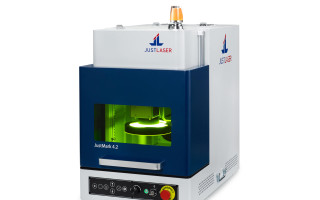To perform black marking with a marking laser, you need the following components:
- A marking laser that is suitable for marking metals. The laser should have a high pulse energy, a short pulse duration and a high repetition rate to enable fast and precise marking.
- Software that allows you to set the marking parameters such as laser power, pulse frequency, scanning speed, marking distance and marking size. The software should also have a user interface that allows you to create or import the marking data such as text, graphics, barcodes or QR codes.
- Focusing optics that focus the laser beam on the desired marking area. The focusing optics should have a high resolution and low distortion to ensure high marking quality.
- A mechanical device that brings the workpiece to be marked into the correct position. The mechanical device should have high precision and high repeatability to ensure uniform marking.
Black marking with a marking laser is an innovative and pioneering technique that makes it possible to create permanent, high-contrast and environmentally friendly markings on metals. The markings are suitable for a wide range of industrial applications where high quality and safety standards are required.
A MOPA laser is ideal for black marking, as it enables particularly high-contrast and permanent black markings thanks to the flexible control of pulse duration and frequency. In addition to the MOPA laser, you need suitable software, precise focusing optics and a mechanical device to achieve optimum results.

